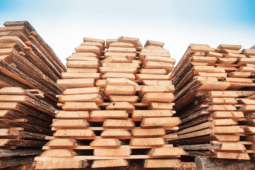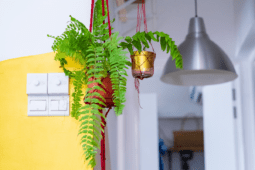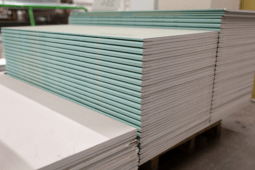How to: Make Typographic String Art

In the late 60s and 70s, string art became a popular paint-by-numbers-y way for the masses to get crafty. Head to your local thrift store, and you’ll likely find a few, in all their harvest gold glory. Usually sold in kits, these guys involved strategically placed nails or pins that were connected by string or yarn to create geometrical shapes or mathematical patterns.
But, I’m not really into geometrical shapes or mathematical patterns. I’m into letters, so I decided to create some original string art with a typographic twist. It’s super fun, easy-to-make, and infinitely customizable. Plus, it’s my favorite kind of project, where the supplies come from both the craft shop and my local True Value hardware store (we’re a part of the 2011 True Value Blog Squad!).
Here’s how:
Materials and Tools:
- 1/2″ or 3/4″ plywood
- 1 1/4″ flat head nails
- Hammer
- Needlenose pliers
- Computer and printer or projector
- String or yarn (I used embroidery thread)

1. Begin by designing your piece. I just went with a simple two word phrase, but you could go as complex as your want – somebody’s name, a quote you love, decor for a party or wedding. You want to do this first, so you’ll know what size your plywood needs to be.

2. Cut your wood or plywood to size. If you don’t have a saw, see if your True Value ‘hardwarian’ will help (they’re really friendly!). Also – get a saw! You’ll want to use actual wood here, as opposed to a composite product like MDF or hardboard, as those are really meant for glue, and won’t hold nails very well.
Since I knew I was going to use my overhead projector to transfer the image, I just printed the transparency, and used that to size an piece of plywood I had lying around, which I then cut to size. Mine ended up being 11 x 24″
 3. Paint or stain your wood. I knew I wanted to use this rainbow embroidery thread I’ve had since college, so I just went with a basic white. But a dark walnut-y stain with a bold yellow or turquoise would be awesome, so use your imagination.
3. Paint or stain your wood. I knew I wanted to use this rainbow embroidery thread I’ve had since college, so I just went with a basic white. But a dark walnut-y stain with a bold yellow or turquoise would be awesome, so use your imagination.
 4. Next, create a pattern from your original art. I just printed onto an overhead transparency, since I have a projector I can use to transfer the image. (It pays to have parents who used to be teachers!) If you have a media or art projector, use that, or you can simply print out each letter onto a piece of paper or cardstock, cut them out, then use that to transfer your letters onto your wood. If you trust your hand, you could also just add the dots by hand, using a ruler or square to keep everything even.
4. Next, create a pattern from your original art. I just printed onto an overhead transparency, since I have a projector I can use to transfer the image. (It pays to have parents who used to be teachers!) If you have a media or art projector, use that, or you can simply print out each letter onto a piece of paper or cardstock, cut them out, then use that to transfer your letters onto your wood. If you trust your hand, you could also just add the dots by hand, using a ruler or square to keep everything even.
Notice I’ve added the dots for each nail to my pattern, and that’s what I transfer to the plywood, instead of the outline of each letter. There really isn’t a science to this, and I admit, I just kinda made it up. Three things to keep in mind:
- Add more dots than you might be inclined to, unless you’re going for a sparse-r look.
- Curves need more nails than straight lines, so do those first, and then add dots to your lines in equal density.
- Don’t make your dots perfectly parallel in rows. I learned this one the hard way, and will definitely adjust next time. You want a bit of variety, so that your “cross strings” won’t be perfectly straight.

5. Then transfer your dots onto you plywood. I used a bit of 1″ painter’s tape as a margin, to keep everything straight and square, as overhead projectors can distort an image at close distantances.

5. Then, start nailing. I recommend setting up somewhere tall, since it’s a lot of nails, and you’ll get tired and sore from bending over quickly. As far as depths – it’s not a science. Just hammer the first one in until it just dimples the back, then hammer it back the other way. That’s your depth. They won’t be perfect, but it doesn’t really affect the final result. Keep things as straight as you can, knowing you can adjust angles later.
This took me about two sessions of 20-25 minutes, taking a break in between.

6. Then, just string it up. Start in a corner, and tie it off with a butcher’s knot. At the beginning, don’t follow a pattern, but keep your crosses close. Once you’ve gone around once, you can make longer leaps up and down the letter. I found it useful to go all the way around the letter near the end, finishing by filling in any the “emptier” space. Try to avoid connecting the same two nails twice, as you can really tell when it’s doubled up. I probably made this a bit harder on myself by using the rainbow string, as I also had to account for a balance of the different colors, but the results were definitely worth it.
Also, once your string is on, you’ll probably notice some of your nails are a bit out of line. Just use a light tap with a hammer to line everything up.

That’s it. Go forth, and make some art!









